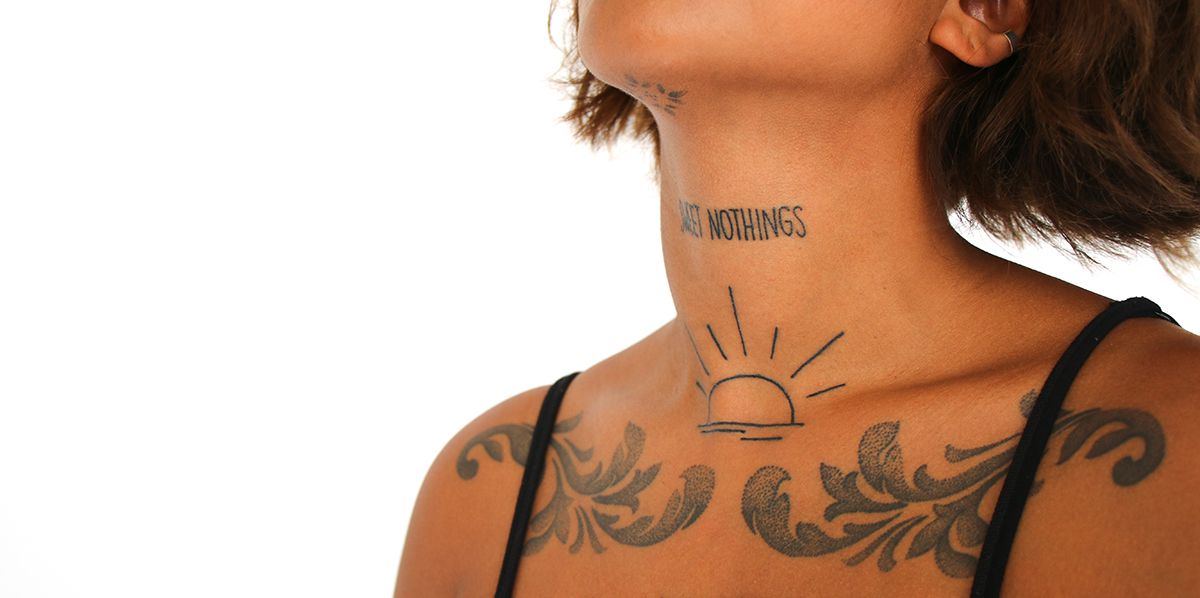Congratulations! You’re the proud owner of brand-new ink. The hardest part of your tattoo experience is over—making decisions about your studio, artist and design, plus sitting through the discomfort of getting it done—but the experience itself is not quite complete. You’ve now entered the final stage of the tattooing process: healing.
While artists often tell their clients that tattoos heal in an average of two weeks, Dr. Joshua Zeichner, Director of Cosmetic and Clinical Research in Dermatology at Mount Sinai Hospital in New York, suggests that this is quite the underestimate. So then when does a tattoo fully heal?
When does a tattoo fully heal? It depends on these variables
The exact length of the healing process varies between tattoos. How long a piece takes to heal is largely dependent on the amount of damage done to the skin by the tattooer’s needles, and that can differ based on the person, the style, and the method of tattooing. (For example, check out the pain scale for hand-poked designs.)
“Outlining the exact healing process can be difficult because it depends on the client’s skin, if the tattoo was done with a machine or hand poked, if it’s mostly line work or full color or shaded, et cetera,” says Seattle-based tattooer Jac Milliron. This is why they “recommend clients to wait six to eight weeks for an accurate picture of how a tattoo has healed and settled in their skin.”
Dr. Zeichner agrees, saying he tells “tattooed patients that it can take months for the wound to heal fully..” So what can you expect during the healing process and exactly when does a tattoo fully heal? With the help of Milliron, Dr. Zeichner, and Toronto-based tattooer Emily Trajkovski we’ve put together a complete timeline of the healing process below.
Day 1: That ~*new new*~
You tattoo is fresh and probably very sore to the touch. It looks great though. “For the first two days after getting a new tattoo, it will most likely look its best,” says Trajkovski. New tattoos like these are the ones you see on most artist’s Instagram pages because the ink is as vibrant and the lines are as crisp as they will ever be.
This is also when your body initiates its healing process. And phase one of healing typically includes “plasma [a component of your blood] discharge oozing from the tattoo,” Milliron explains. If you’ve been sent home from your tattoo appointment wearing a “second skin” bandage-like Saniderm, you will likely see this plasma build up underneath its barrier. This is completely normal—don’t fret.
At this entry point of the process, to ensure your body heals as effectively as possible, it’s highly recommended that you avoid exercise, take care not to get the tattoo wet, and heed your artist’s advice about proper aftercare.
Days 3-10: Scabbing begins
As the wound created from getting tattooed begins to close at the surface, your skin will likely be itchy over this period. This is when “scabs can form and raise the tattoo from your skin,” says Trajkovski. “It is very important not to touch the tattoo or itch it because if the scabs come off, it could pull healing ink out and compromise the [end] result of the fully healed tattoo.”
Milliron also warns that sometimes the scabbing part of the process can look a bit grotesque, especially if it’s your first tattoo, but know that some peeling and scabbing is totally normal. However, tattoo scabs are a lot more shallow than the abrasions that pop up when we hurt ourselves. Keep in mind that larger pieces and full-color designs can scab more intensely and that the peeling could be a lot worse can also be worse if your artists isn’t super experienced and goes too deep into the skin. Generally speaking, you’re fine unless there’s a clear sign of infection like intense swelling, oozing, rashes—in which case you should go see a doctor.
Weeks 2-3: The tattoo has a shine
“After a week or two, the scabbing will flake away into a shiny or waxy layer of skin,” says Milliron. Any itchiness should subside at this point but your tattooed skin still won’t look entirely back to normal. That’s because it’s not yet fully healed. “During the next several weeks, the tattoo itself may appear healed on the outside, but the deeper skin layers are continuing to repair themselves,” explains Zeichner. At this point though, it’s generally considered safe to go back to normal exercise and to swim (or bathe) again.
Weeks 6-8: You’re fully healed
Congratulations are in order yet again! The waxiness, or shininess, of your tattoo should disappear after six to eight weeks, at which point you can usually consider yourself fully healed. Regardless of the fact that you’re healed, you should continue to care for your tattoo though. Ensure it stays moisturized and always apply sunscreen if you’ll be exposing it to the sun—this will keep your tattoo looking new and vibrant for as long as possible.
If you liked our post A Complete Timeline: When Does a Tattoo Fully Heal?, check out Here’s Exactly How to Wash a New Tattoo.

